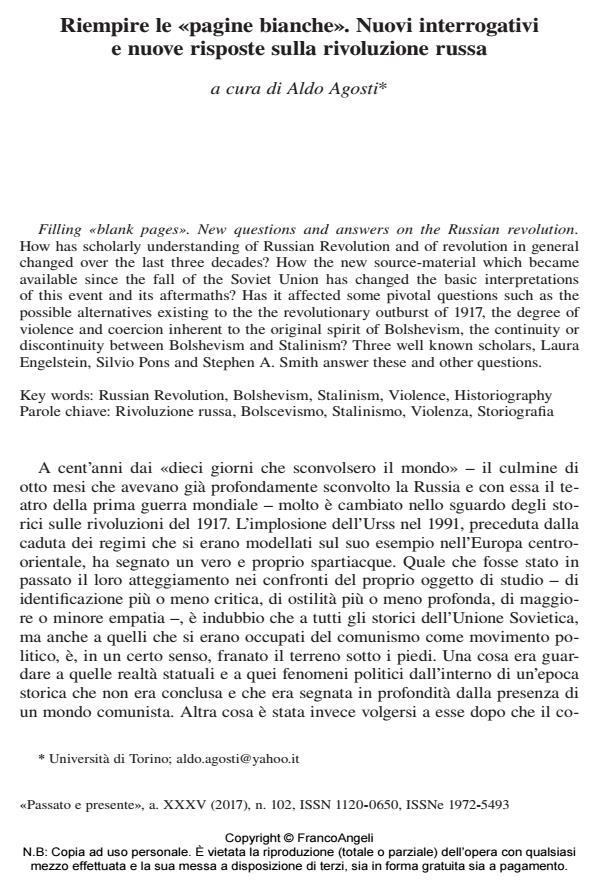Filling «blank pages». New questions and answers on the Russian revolution.
Journal title PASSATO E PRESENTE
Author/s Aldo Agosti
Publishing Year 2017 Issue 2017/102
Language Italian Pages 28 P. 19-46 File size 204 KB
DOI 10.3280/PASS2017-102002
DOI is like a bar code for intellectual property: to have more infomation
click here
Below, you can see the article first page
If you want to buy this article in PDF format, you can do it, following the instructions to buy download credits

FrancoAngeli is member of Publishers International Linking Association, Inc (PILA), a not-for-profit association which run the CrossRef service enabling links to and from online scholarly content.
How has scholarly understanding of Russian Revolution and of revolution in general changed over the last three decades? How the new source-material which became available since the fall of the Soviet Union has changed the basic interpretations of this event and its aftermaths? Has it affected some pivotal questions such as the possible alternatives existing to the the revolutionary outburst of 1917, the degree of violence and coercion inherent to the original spirit of Bolshevism, the continuity or discontinuity between Bolshevism and Stalinism? Three well known scholars, Laura Engelstein, Silvio Pons and Stephen A. Smith answer these and other questions.
Keywords: Russian Revolution, Bolshevism, Stalinism, Violence, Historiography
Aldo Agosti, Riempire le «pagine bianche». Nuovi interrogativi e nuove risposte sulla rivoluzione russa in "PASSATO E PRESENTE" 102/2017, pp 19-46, DOI: 10.3280/PASS2017-102002